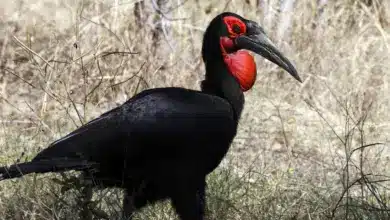Social Flycatchers or Vermillion-crowned Flycatchers
The Social Flycatchers or Vermillion-crowned Flycatcher, Myiozetetes similis, is a passerine bird, a member of the large tyrant flycatcher family.
Distribution / Range
It breeds in cultivation, pasture, and open woodland with some trees from northwestern Mexico south to northeastern Peru, southern Brazil, and northwestern Argentina.
It is sometimes split into two species, with the Social Flycatcher, M. texensis, from Costa Rica northwards, and the Vermillion-crowned Flycatcher, M. similis, from southwest Costa Rica into South America.
Breeding / Nesting
The nest, built by the female in a bush, tree, or on a building, is a large roofed structure of stems and straw, which for protection is often built near a wasp, bee, or ant nest, or the nest of another tyrant flycatcher. The nest site is often near or over water.
The typical clutch is two to four brown- or lilac-blotched cream or white eggs, laid between February and June.
Description
In appearance, the Social Flycatcher resembles a smaller Boat-billed Flycatcher, Megarynchus pitangua.
The adult is 16-18 cm long and weighs 24-27 g. The head is dark grey with a strong white eyestripe and a concealed orange crown stripe. The upperparts are olive-brown, and the wings and tail are brown with only faint rufous fringes. The underparts are yellow and the throat is white.
Young birds have a paler eye mask, reduced crown stripe, and chestnut fringes to the wing and tail feathers.
The Social Flycatcher is similar to its close relative, the Grey-capped Flycatcher, Myiozetetes granadensis, which shares much of its range. The adult Grey-capped Flycatcher has a much weaker head pattern, with a grey head and a short indistinct eyestripe.
Calls / Vocalization
The call is a sharp peeurrr and the dawn song is a chips-k’-cheery.
Diet / Feeding
Social Flycatchers sally out from an open perch in a tree to catch insects in flight. They also regularly hover to take small berries and will enter shallow waters to predate tadpoles.

